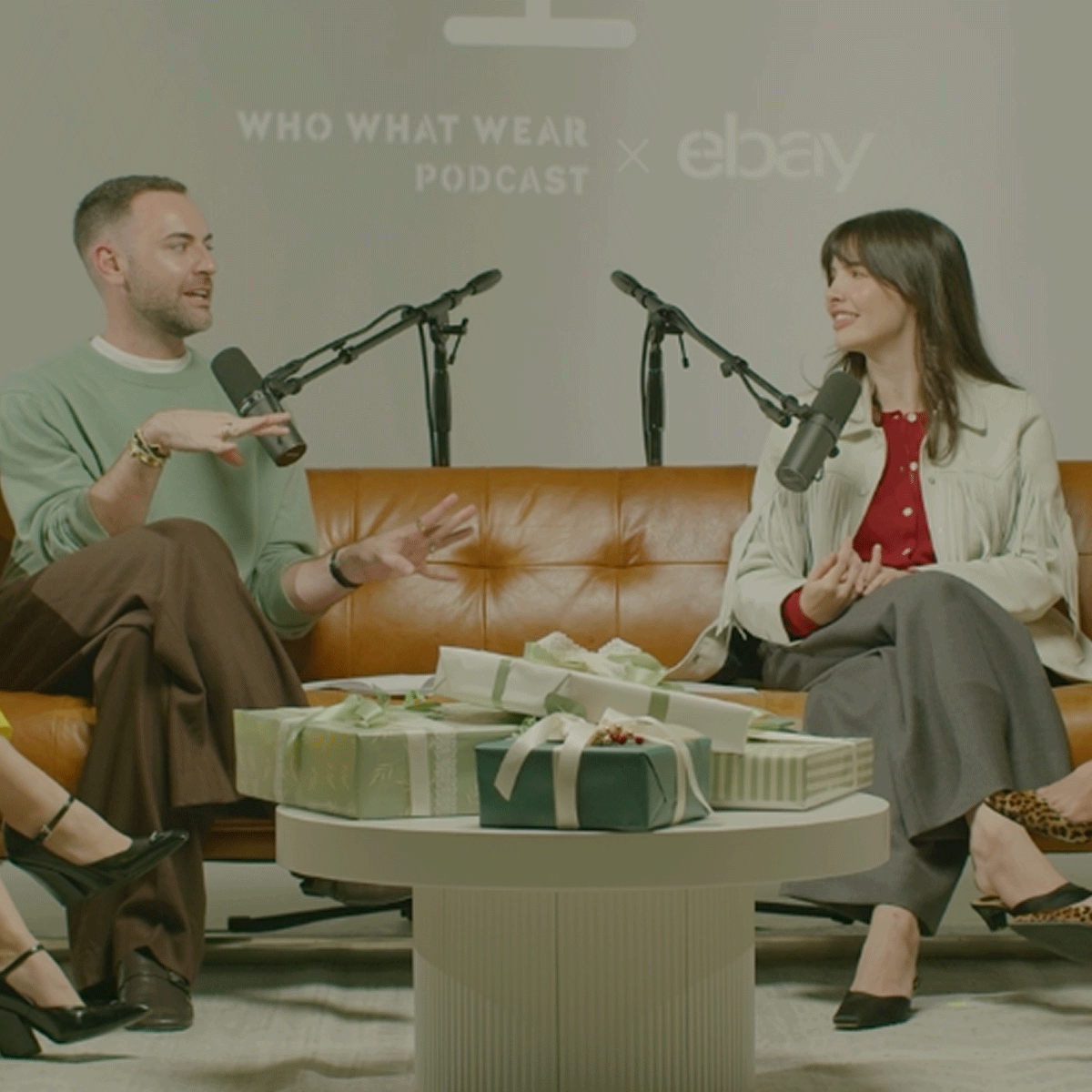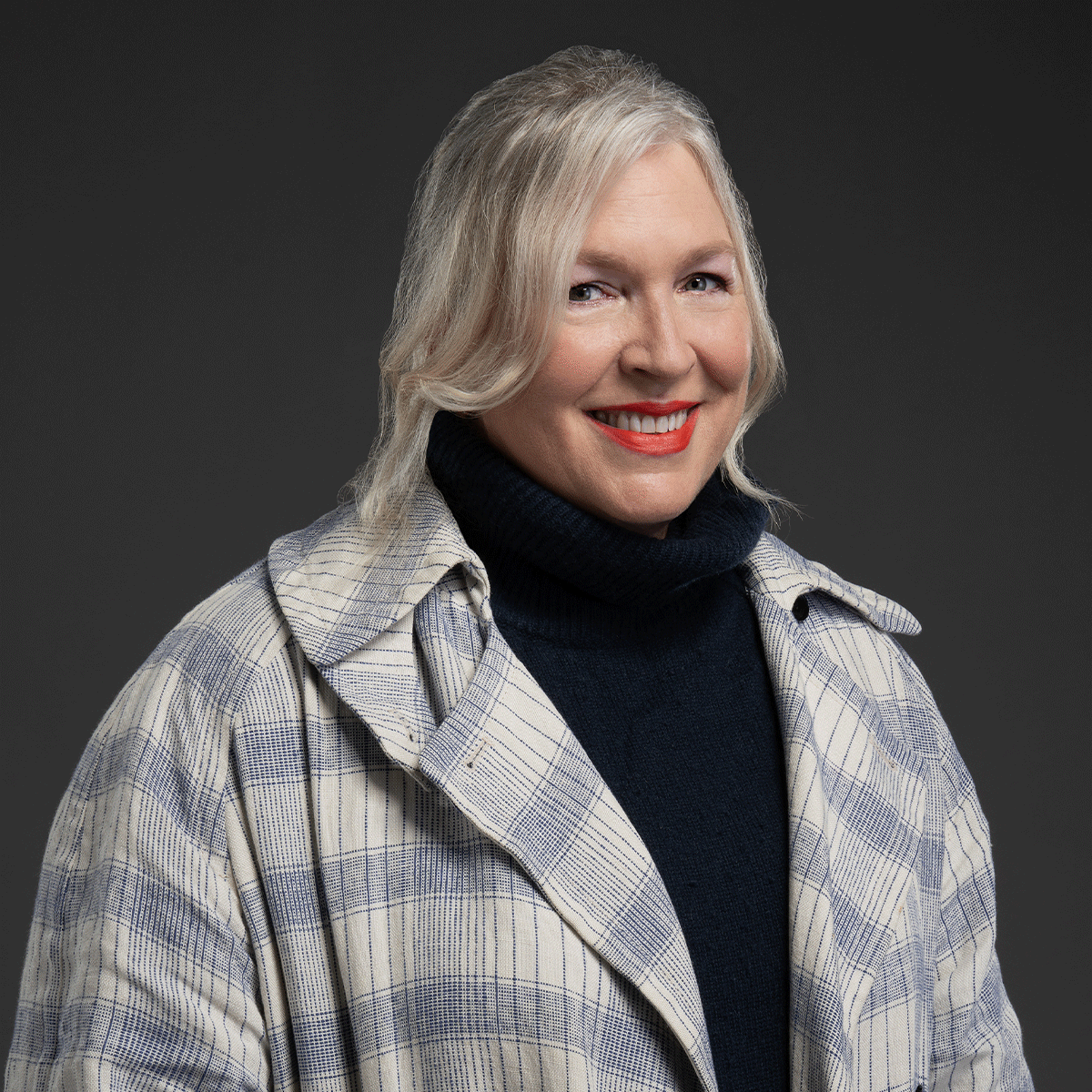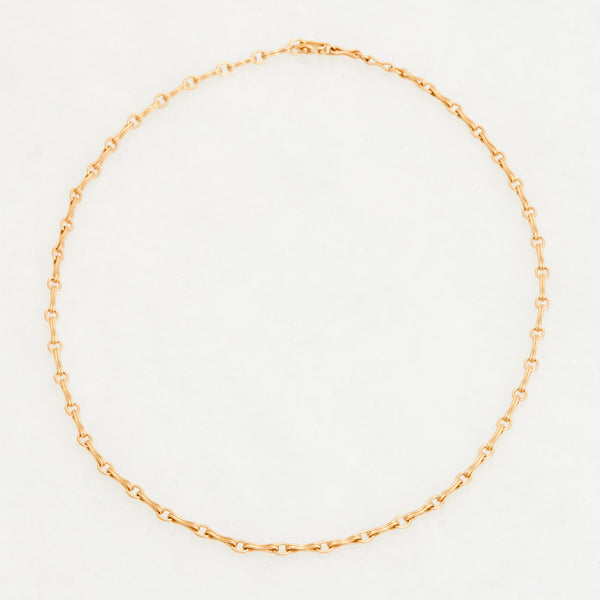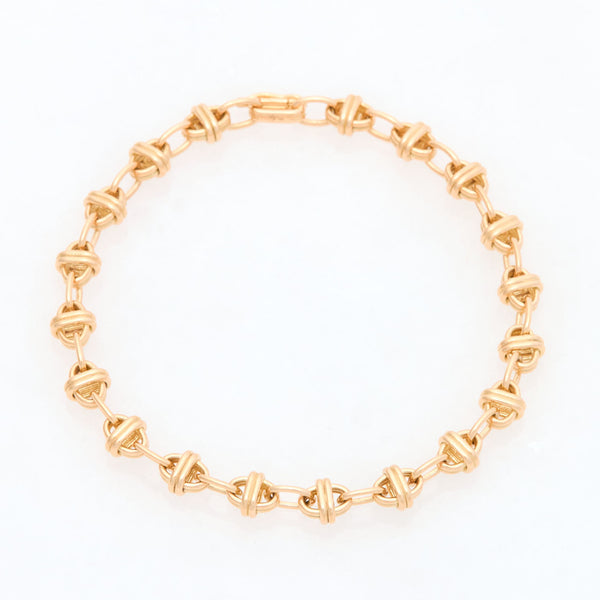How Danielle Sherman Went From Co-Founding The Row to Launching Her Jewelry Line

Welcome to our podcast, Who What Wear With Hillary Kerr. Think of it as your direct line to the designers, stylists, beauty experts, editors, and tastemakers who are shaping the fashion-and-beauty world. Subscribe to Who What Wear With Hillary Kerr on Apple Podcasts and Spotify.
Danielle Sherman has worn many hats throughout her career. For one, got her start in the fashion world at a young age. From taking classes at Jo-Ann Stores to sewing with Vogue patterns, Sherman has always loved working with her hands.
While learning to sew, she was also making jewelry and had a knack for sourcing rosary beads from flea markets and remaking them into necklaces. At the age of 16, Sherman launched her own line of leather accessories, which was funded by a small acting role she landed in The Parent Trap.
(Yes, *the* Parent Trap, starring Lindsay Lohan.)
Eventually, Sherman moved to New York City and enrolled at New York University. Upon graduation, Sherman worked for Tahari ASL and went on to co-found The Row with Mary-Kate and Ashley Olsen. After stints at Alexander Wang and EDUN, Sherman struck out on her own. During her time consulting was when Sherman was able to get in the headspace to get creative and figure out what she wanted to do next.
That next thing? Relaunching her grandparent's high-end women’s tailored clothing, Sherman Field, as a fine jewelry label in 2019.
In the latest episode of Who What Wear With Hillary Kerr, Sherman shares how she went from co-founding The Row to launching her fine jewelry line, the investment pieces worth buying, and so much more.
For excerpts from their conversation, scroll below.
You co-founded The Row with Mary Kate and Ashley Olsen. You've designed for Alexander Wang. You have worked for really important brands. I'm hoping that you can give our listeners a little bit of insight into your background.
I like to actually proceed the fashion background because I think so much of what I've been able to accomplish extends from how I was raised. Being born in Los Angeles, being raised by my mom, my father passed away when I was really young.
I've always been a very active child but also taking on a lot of responsibility. That being said, I always was also making things with my hands. I was taking classes at Jo-Ann Fabric when I was 12 years old.
I was learning, sewing, getting McCall's patterns, Vogue patterns from very early on. Then at the same time, I was also making jewelry. I was sourcing rosary beads from flea markets and remaking, re-crafting them into necklaces. Even though I am Jewish and go by being Jewish, I would love working with rosary necklaces.

Then I had one year when I was an actor (not really—I was barely an actor). I auditioned for a Lindsay Lohan film, The Parent Trap. I landed a very small role and that role funded my first business when I was 16. It was a leather accessory business.
Eventually, I got a few meetings, and my bracelets, my leather cuffs were on the Dixie Chicks. From there, I went to NYU and was always interning for multiple places, but nothing fashion related. I just wanted to explore both my academics and also art and other things.
I felt like I grew up pretty early, but it just cemented just another chapter in my life of independence and figuring things out. From there, I had a brief paying job at Tahari ASL and then The Row. That was in 2005; I co-founded [it] with Mary Kate and Ashley. From there, I joined Alexander [Wang] [and] originally worked with him on [the] runway and then launched T for him as a design director for men's and women's. I was there for five and a half years. After Alex, I joined Edun.
It was incredible because from all the companies I've worked at—from domestic production all the way to doing things in Asia to doing things in Africa—it was incredible to explore new territory.

You had a very entrepreneurial side, given the fact that you were starting your own businesses and working at such a tender age. At what point did you start thinking about doing something for yourself? Specifically, why were you interested in thinking about jewelry and fine jewelry?
After I left Edun, our family moved to L.A. I had an infant at the time. The first thing I did was actually just open up a consulting company because I knew if I was going to help support the family and keep the creative juices flowing, I still need to be doing something.
I was consulting for PLS+T. It was a division of Theory in Japan. I was working for fast retailing. I had that, which was financially supporting this level of independence being here in L.A. and not having a full-time job. That was my first consulting gig.

While I was consulting, I then had the headspace [to] create something. Did I know is going to be jewelry? Not necessarily, but I knew I wanted to create something.
When I was thinking about all the things that I've done and maybe haven't pursued, I've always had a pension for heavy, kind of big, bold pieces. I've never found the pieces that I would want to wear.
That's where I kind of landed on jewelry. I feel like I had the headspace to have more creative thinking because I didn't have a full-time job.
Obviously, jewelry is very personal and unique and distinct to everyone who wears it, but there are some truths, as well. If someone was starting out and starting to build their collection and really wanted to invest in pieces from you, what would you suggest in terms of starting out?
Part of why we started the Column Chain—which is our entry price point necklace—is so [customers] can afford that piece along with a locket. That was the intention.
I want someone to be able to walk away spending under 15 or about $15,000 plus and have two pieces as opposed to just one. That was the intention behind that. It's an investment piece still, being the price point that it is, but that you could then in time purchase other pieces to wear along with it.
I would rather save up for a whole year and buy one special piece than have multiple pieces of things that sure will not last and are trend-based.
The Oval Chain Link is to this day our best seller, best performer, because it's very intricate and the design behind it is something that people are excited about.
I think finding your link and finding your length are the two things I always start with people. So maybe a chain ultimately is the best investment, because, I think, to this day, it's still hard to find weighty chains that you can wear and pass on.
This interview has been edited and condensed for clarity. Next up, check out our previous episode featuring Tina Leung.
-
 The Wicked: For Good Costume Designer Reveals How He Created the Magical Looks Worn by the Film's Stars
The Wicked: For Good Costume Designer Reveals How He Created the Magical Looks Worn by the Film's StarsPlus, how the costuming has evolved since the first film.
-
 The Costume Designer of Clueless Celebrates 30 Years of the Film's Iconic Fashion
The Costume Designer of Clueless Celebrates 30 Years of the Film's Iconic FashionPlus, what it was like working on the iconic film.
-
 Our Top Holiday Gifts of 2025
Our Top Holiday Gifts of 2025Plus our surprise gifts to each other.
-
 Stylist Enrique Melendez Recounts Jenna Ortega's Style Evolution
Stylist Enrique Melendez Recounts Jenna Ortega's Style EvolutionPlus, what it's like styling for the red carpet versus a press junket.
-
 How the Frankenstein Costume Designer Brought the Film to Life
How the Frankenstein Costume Designer Brought the Film to LifePlus, what it was like working with Guillermo del Toro.
-
 Nobody Wants This Costume Designer Shares How She Built the World for the Hit Netflix Series
Nobody Wants This Costume Designer Shares How She Built the World for the Hit Netflix SeriesPlus, how she got her start.
-
 Nobody Wants This Star Justine Lupe on Her Character's Style and Acting While Pregnant
Nobody Wants This Star Justine Lupe on Her Character's Style and Acting While PregnantPlus, a behind-the-scenes look at her stunning Emmys look.
-
 The Secret K-Beauty Ingredient That Will Give You Glowing Skin for Years to Come
The Secret K-Beauty Ingredient That Will Give You Glowing Skin for Years to ComeThree experts break down the benefits.





